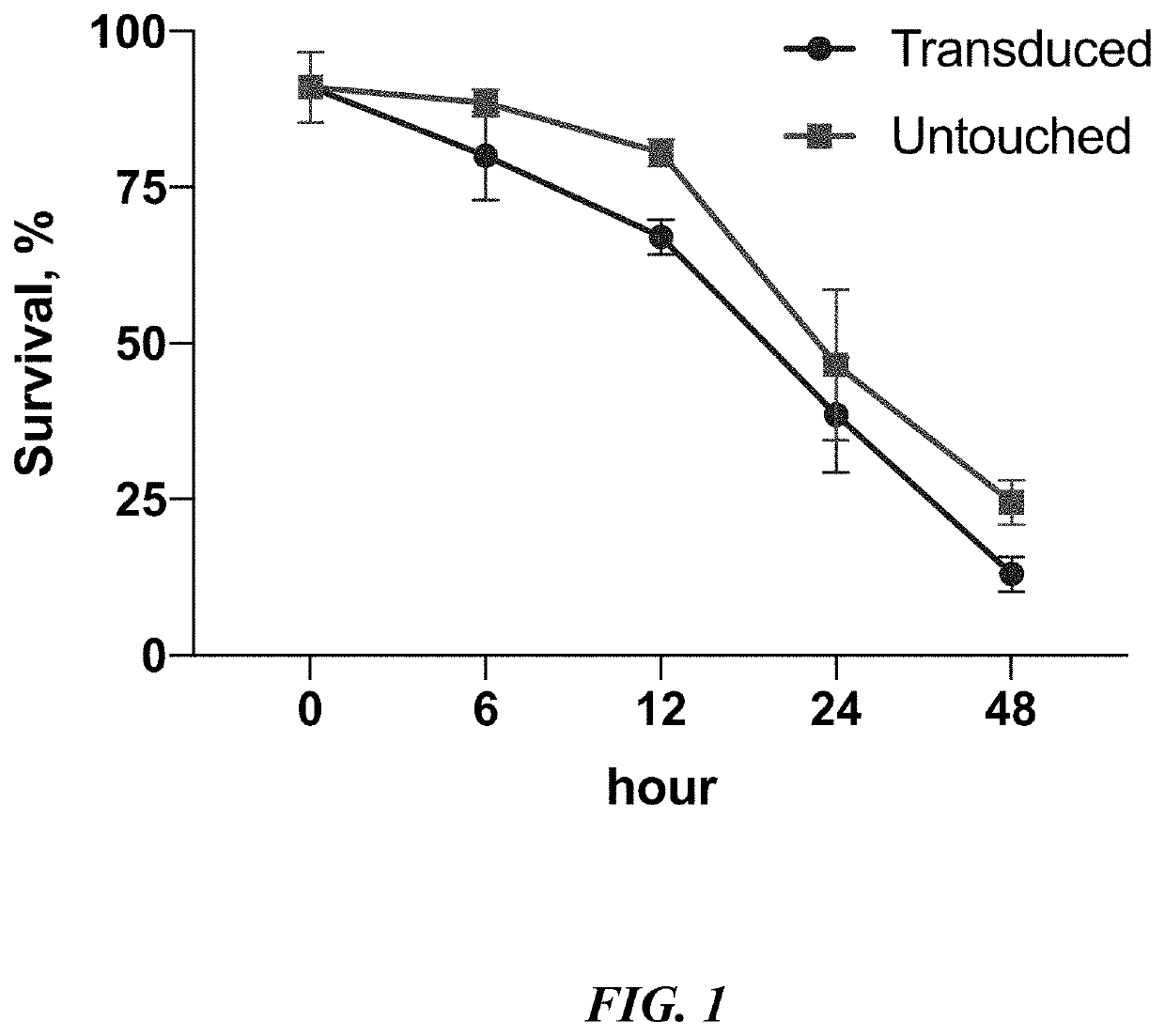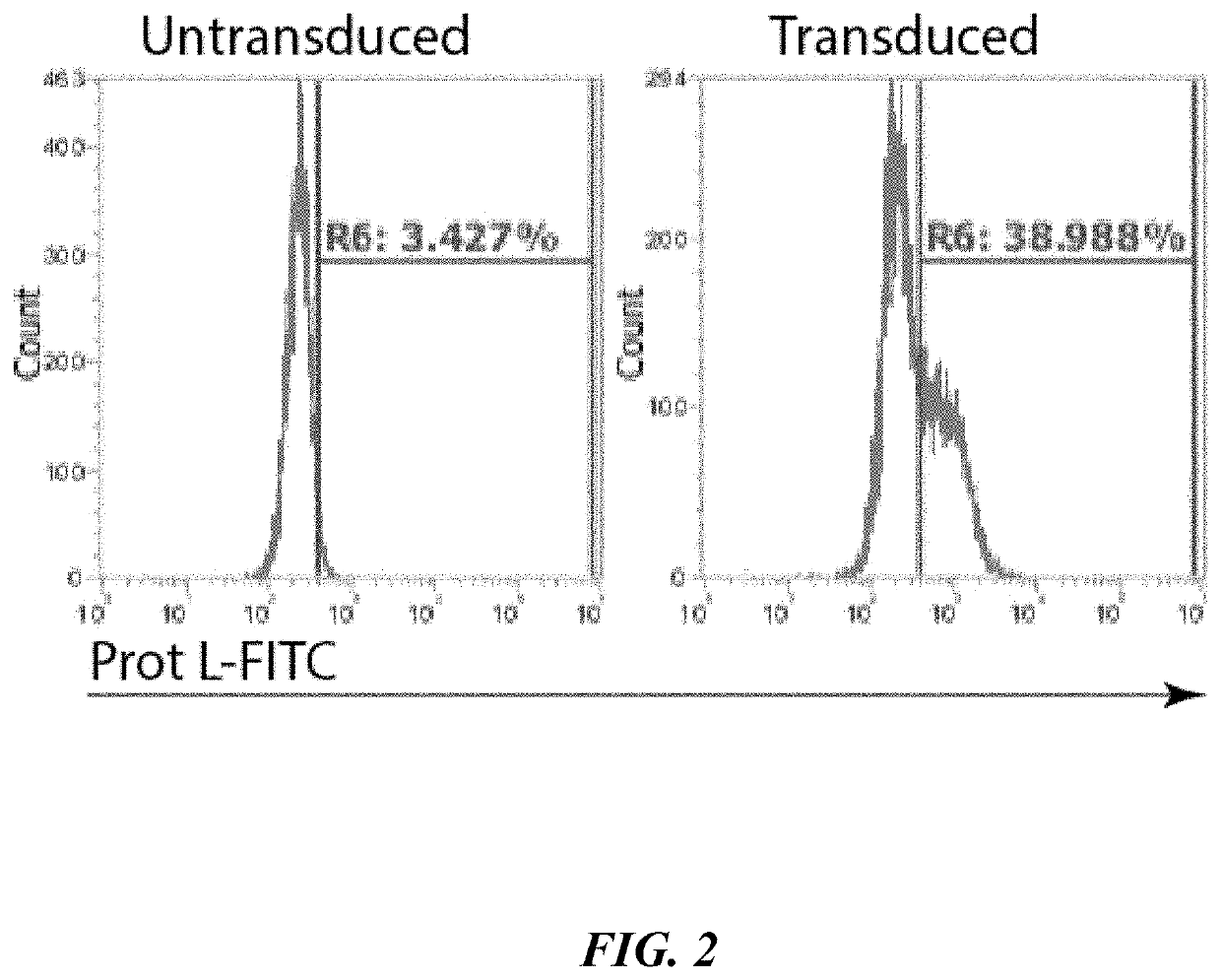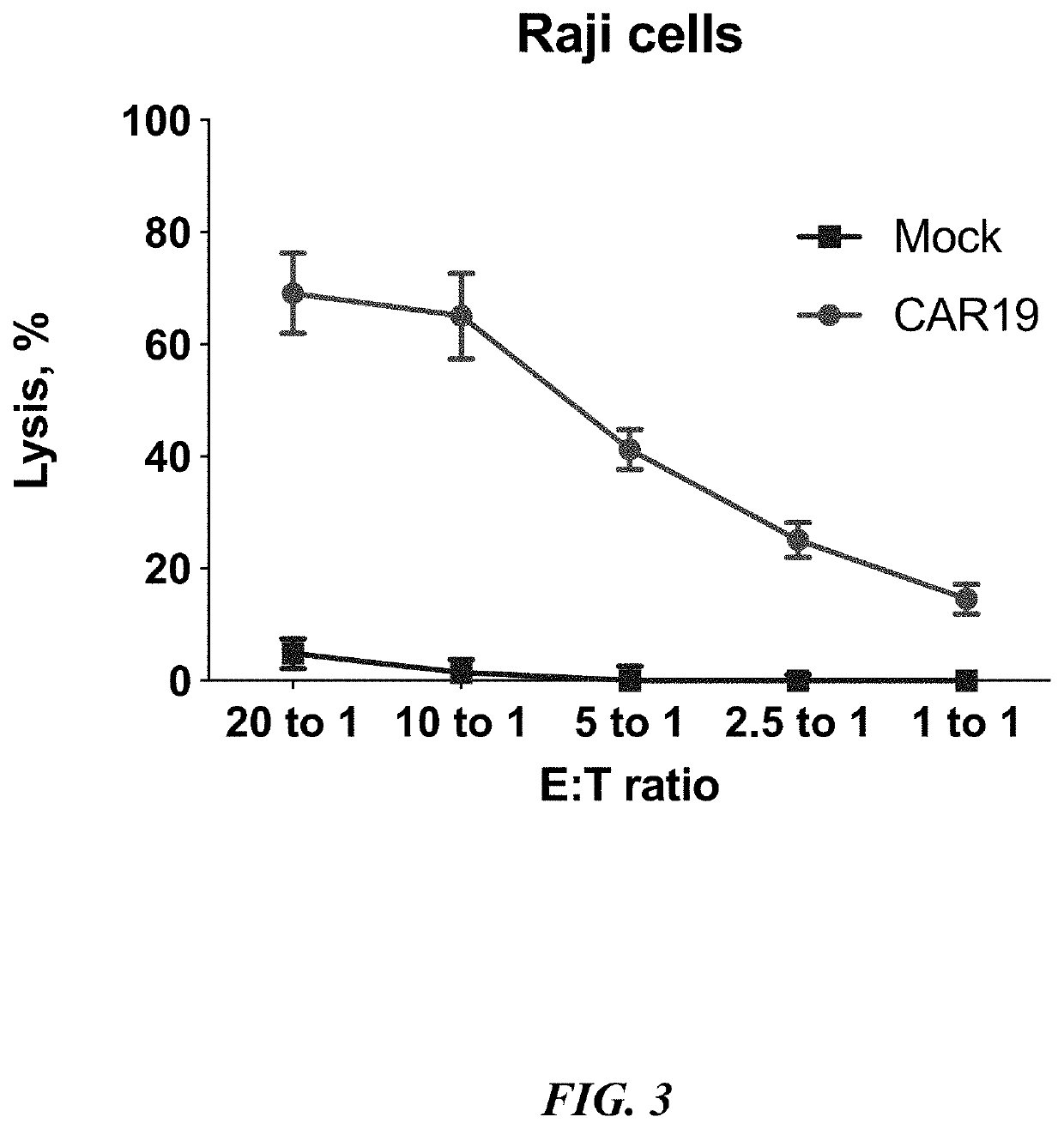Reprogramming of polymorphonuclear leukocytes
a technology of polymorphonuclear leukocytes and cancer immunotherapy, which is applied in the direction of antigen ingredients, antibodies, whole-cell/virus/dna/rna ingredients, etc., can solve the problems of effectiveness and safety of this therapy that have yet to be improved
- Summary
- Abstract
- Description
- Claims
- Application Information
AI Technical Summary
Benefits of technology
Problems solved by technology
Method used
Image
Examples
example 1
nt and Production of CD19-CAR Lentivirus
[0088]The nucleotide sequence coding for chimeric antigen receptor specific to CD19 antigen (CAR19) was synthesized (Genecust, France) and cloned to the pLV2 lentiviral plasmid vector.
[0089]To produce lentiviruses, 293T packaging cells were transfected with the pLV2-CAR19 plasmid vector. The packaging plasmids were psPAX2 and pMD2.G (Invitrogen, USA). The day before transfection, 293T cells were plated in a 10 cm dish cultured in DMEM (Invitrogen, USA) with 10% FBS (Hyclone, USA). When cell density reached about 60% to about 80%, the cells were transfected with the above plasmids using polyethylenimine (PEI, Polysciences, USA). After the transfected cells incubated in a 37° C., 5% CO2 incubator for 12-16 hours, the culture medium was replaced with 5-6 ml fresh DMEM with 10% FBS. The supernatants containing viruses were harvested at 24 hours and 48 hours and concentrated by ultracentrifugation for 90 minutes at 50,000 g, 4° C., then stored at −...
example 2
ion of Polymorphonuclear Leukocytes with Lentiviral Vector Coding for CD19 Targeting CAR
[0090]Human polymorphonuclear leukocytes were isolated from fresh donor blood using EasySep™ Direct Human Neutrophil Isolation kit (Stem Cell Technologies Inc, Vancouver, Canada) according to the manufacturer protocol. Processing of 1 ml of blood containing approximately 5×106 human white blood cells usually yield up to 2×106 95% pure human polymorphonuclear leukocytes. Purified cells were resuspended in 500 mkl of PBS containing 2% fetal bovine serum (FBS) and 1 mM EDTA. The purity (percent of CD66b+CD16+ cells) was assessed with flow cytometry analysis with fluorochrome conjugated anti-human CD66b and CD16 antibodies from same manufacturer.
[0091]Polymorphonuclear leukocytes were spinoculated with CD19-CAR lentiviruses at 1200 g for 1 hour, and then stimulated for a further 4 hours with 50 U / ml of granulocyte-macrophage colony-stimulating factor (Neostim, Xiamen Amoytop Biotech Co., Xiamen, Chin...
example 3
onuclear Leukocytes Transduced by Lentiviral Vector Coding for CD19 CAR Kill Lymphoma Cells In Vitro
[0093]The cytotoxicity of engineered polymorphonuclear leukocytes were evaluated in a standard LDH release assay (CytoTox 96 Non-Radioactive Cytotoxicity Assay, Promega) following the manufacturer's recommendations. Polymorphonuclear leukocytes transduced by with lentiviral vector coding for CD19 CAR or untransduced control polymorphonuclear leukocytes were coincubated at different effector / target (E:T) ratio for 6 hours together with human Burkitt lymphoma cells line (Raji). Cytotoxicity was determined by measuring lactate dehydrogenase release after 6 hours. The data are shown in FIG. 3. The data clearly show that genetic reprogramming of polymorphonuclear leukocytes to express chimeric antigen receptor significantly increase their ability to kill cancer cells harboring target for the same chimeric antigen receptor.
PUM
| Property | Measurement | Unit |
|---|---|---|
| molecular weight | aaaaa | aaaaa |
| weight | aaaaa | aaaaa |
| volume | aaaaa | aaaaa |
Abstract
Description
Claims
Application Information
 Login to View More
Login to View More - R&D
- Intellectual Property
- Life Sciences
- Materials
- Tech Scout
- Unparalleled Data Quality
- Higher Quality Content
- 60% Fewer Hallucinations
Browse by: Latest US Patents, China's latest patents, Technical Efficacy Thesaurus, Application Domain, Technology Topic, Popular Technical Reports.
© 2025 PatSnap. All rights reserved.Legal|Privacy policy|Modern Slavery Act Transparency Statement|Sitemap|About US| Contact US: help@patsnap.com



